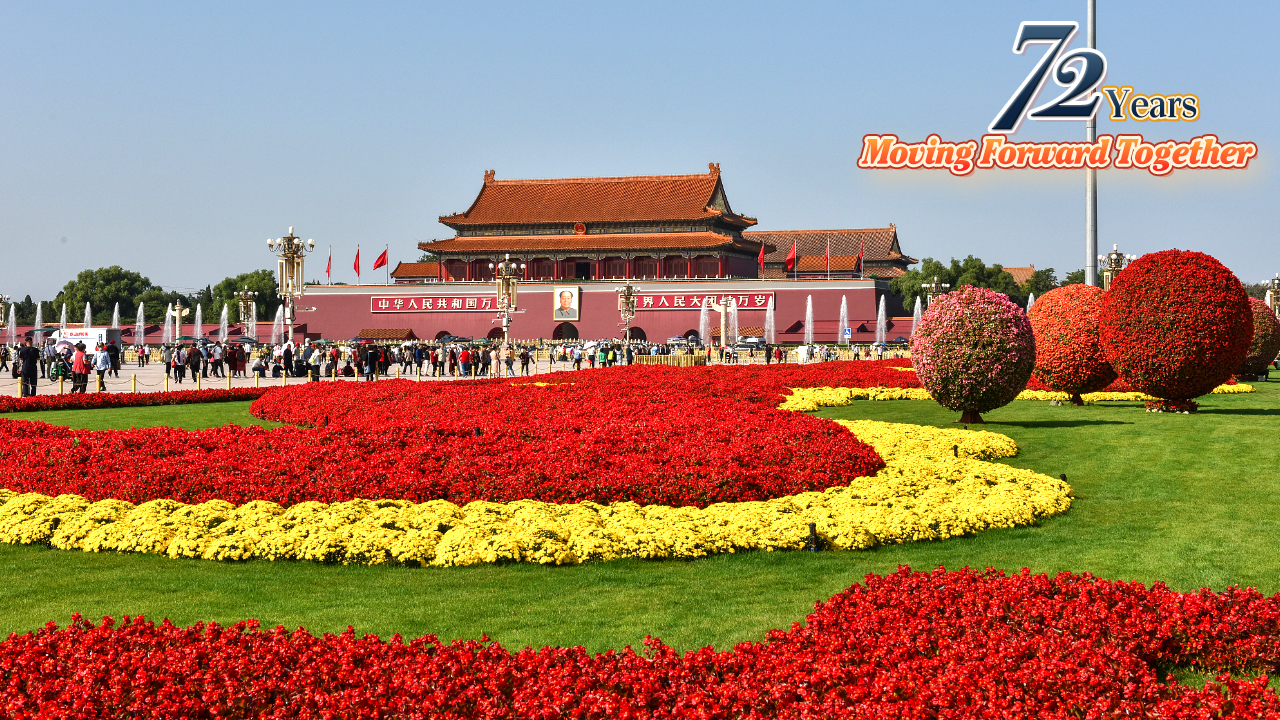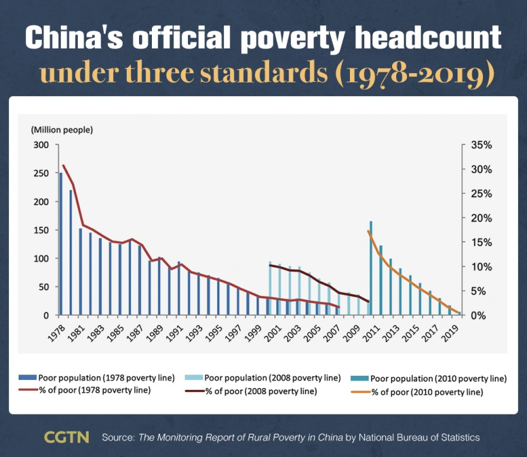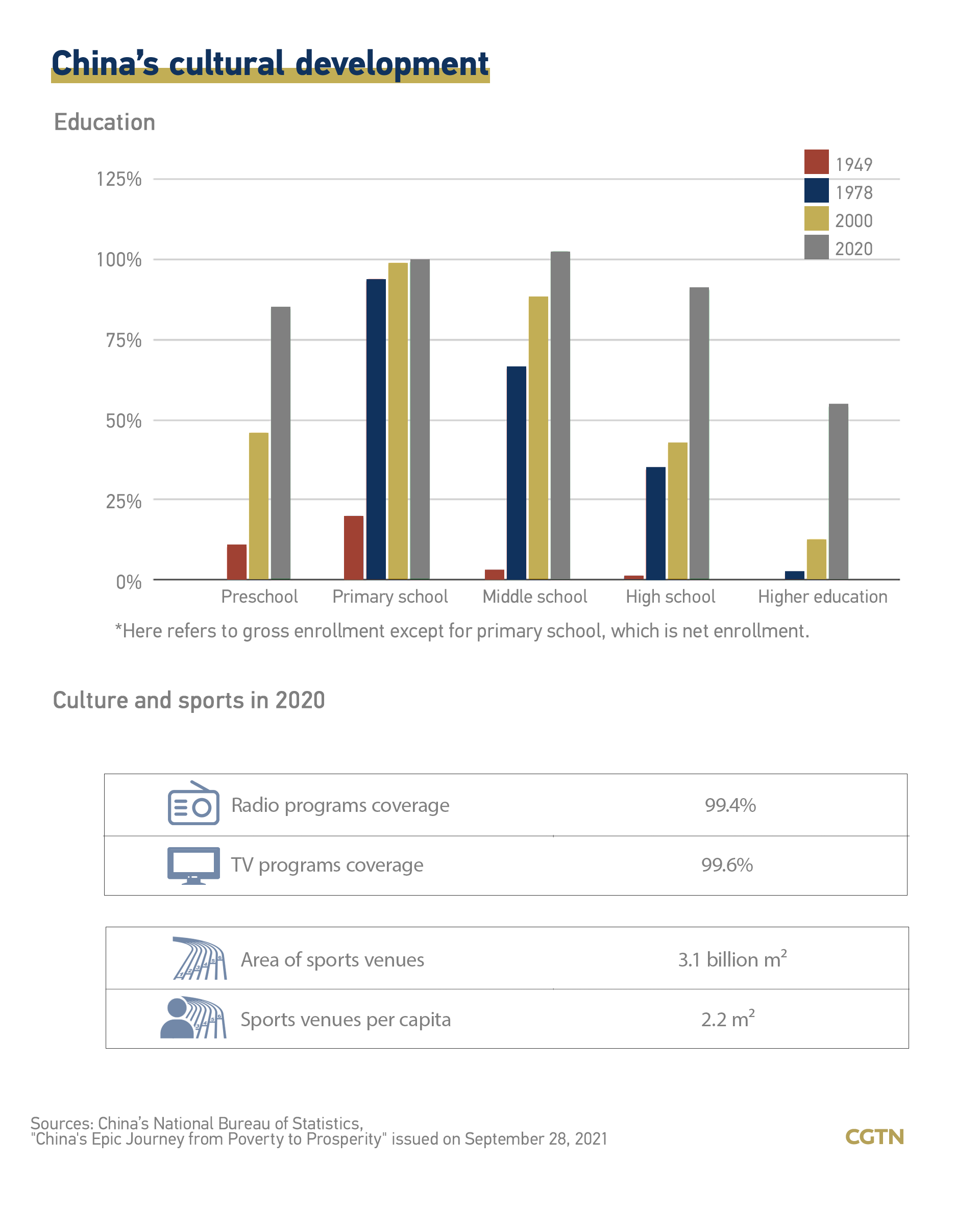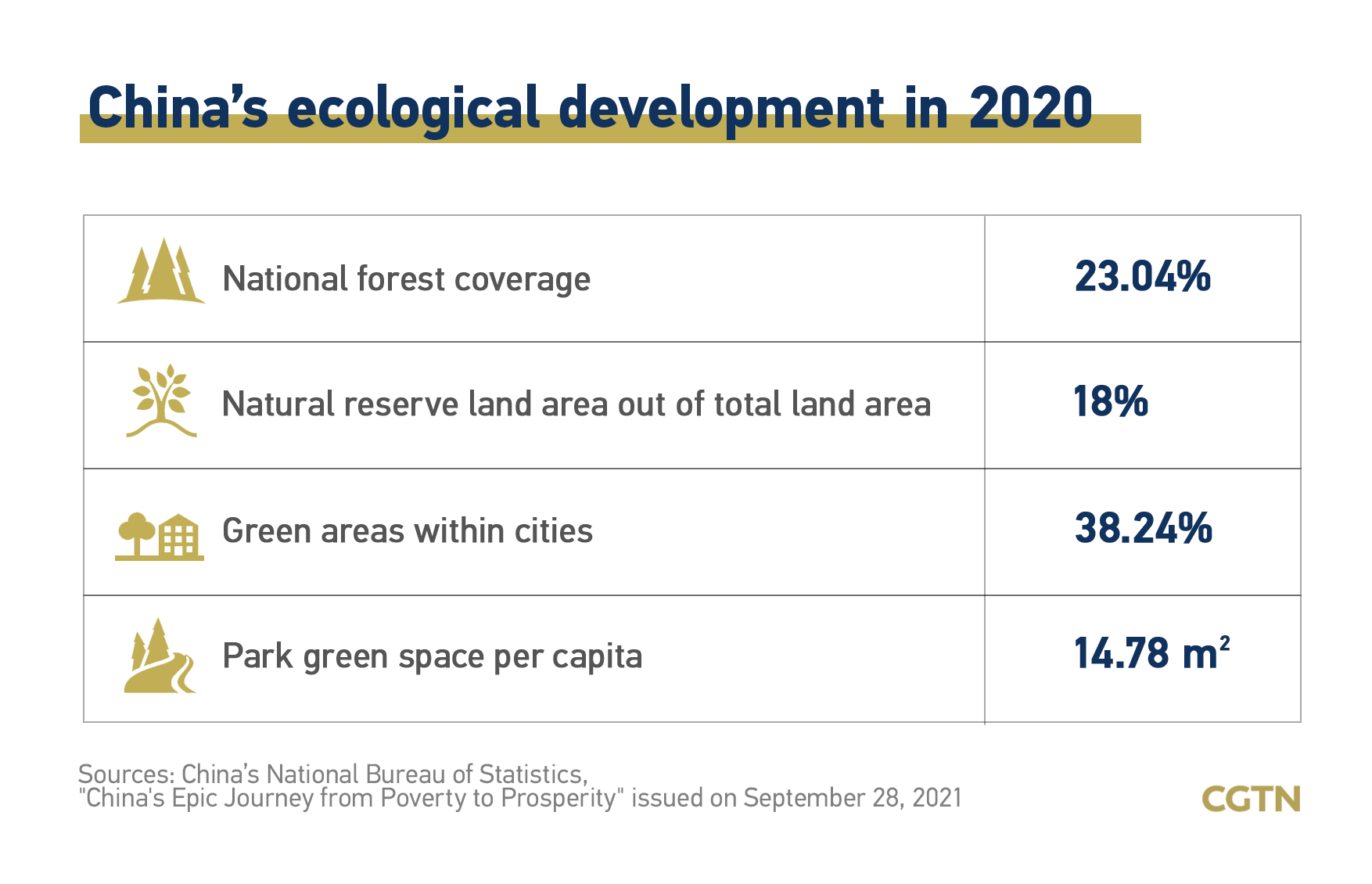
Tourists admiring the flower arrangement in Tiananmen Square, September 30, Beijing. /CFP
Tourists admiring the flower arrangement in Tiananmen Square, September 30, Beijing. /CFP
Today marks the 72nd anniversary since the People's Republic of China was founded. China has achieved a historic transformation since then.
It has risen from a poor country with national GDP of 67.9 billion yuan ($10.5 billion) and per capita GDP of less than $100 in 1952 to an upper-middle-income status with national GDP of 101.6 trillion yuan ($15.77 trillion), and per capita GDP of over $10,000 last year. Now the world's second-largest economy accounts for over 17 percent of global GDP and contributes more than 30 percent of global economic growth, according to statistics from the National Bureau of Statistics.
This economic power has brought significant changes to ordinary Chinese people's lives. Millions have been lifted out of poverty, the standard of living has improved in all respects, and the country has the largest middle class, not only fueling the growth of China but also the world.
From the reform and opening-up that started in 1978 to 2020, some 770 million people have been lifted out of poverty, accounting for over 70 percent of the global poverty reduction in the same period. Meanwhile, the country has a middle-income group of over 400 million people, and this number keeps expanding, offering a supersized market that is growing faster than any other place in the world.

All of the above achievements come as the result of two of China's national goals over decades – eradicating extreme poverty and achieving a moderately prosperous society.
Eradication of extreme poverty in China
China has managed to eradicate extreme poverty, announced Chinese President Xi Jinping in February this year in Beijing. The Communist Party of China (CPC) has been working to improve people's livelihoods since its foundation, with more than 10 million impoverished people lifted out of poverty on average each year since the 18th National Congress of the CPC in 2012.
The final 98.99 million impoverished rural residents living under the current poverty line were lifted out of poverty by the end of 2020. All the 832 impoverished counties and 128,000 impoverished villages have been removed from the poverty list.
In total, 770 million rural residents have shaken off poverty since the beginning of reform and opening-up over 40 years ago, when calculated as per the current poverty line.

The country invested nearly 1.6 trillion yuan ($246 billion) in poverty alleviation and adopted a targeted poverty alleviation strategy through development.
China met the poverty eradication target set in the United Nations 2030 Agenda for Sustainable Development 10 years ahead of schedule, and according to the World Bank's international poverty line, the number of Chinese people lifted out of poverty over the past 40 years accounts for more than 70 percent of the global total.
China's road to all-round moderate prosperity
President Xi Jinping said in his speech at the national commendation that shaking off poverty is not the finish line, but the starting point of a new life and new endeavor.
While eradicating extreme poverty, China has been aiming for a higher goal – building a moderately prosperous society in all respects. A moderately prosperous society, or Xiaokang society in Chinese, refers to a state in the traditional Confucian sense in which everyone is adequately provided for, despite imperfections.
The "moderately prosperous" concept was first proposed by the late leader Deng Xiaoping in 1979. The goal was then formalized at the 18th National Congress of the CPC in 2012, where it stated that by 2020, the GDP and the national income per capita, among other things, should be doubled compared to the 2010 level.
To realize GDP growth is not the sole goal. All-round development in economic, political, cultural, education, social equity areas as well as in eco-environmental fields is essential to moderate prosperity.
After decades of endeavor, China completed the goal of building a moderately prosperous society in all respects, announced President Xi Jinping in Beijing, while delivering an important speech in July this year at the grand gathering to celebrate the 100th anniversary of the founding of the CPC.
China apparently has met the GDP growth goal according to the plans of achieving a moderately prosperous society. China's nominal GDP per capita increased from $4,550 in 2010 to $10,500 in 2020, an average annualized growth rate of 8.7 percent.
In terms of all-round development, China has established the world's largest education system, spanning preschool, primary, secondary, and higher education. The number of medical and health institutions has risen from 170,000 in 1978 to 1,023,000, and life expectancy has increased to 77.3 years.


In addition, China has set up a system of eco-environmental protection zones, safeguarding its biodiversity with nature reserves at different levels and of various types now covering 18 percent of the country's landmass.

Challenge and opportunity ahead: common prosperity
Right after President Xi Jinping announced China had achieved the first centenary goal of building a moderately prosperous society in all respects, he said in the same speech that China is now embarking on a journey to achieve its second centenary goal of building a modern socialist country with common prosperity.
Common prosperity literally means "to get rich altogether," in comparison to the previous philosophy of "let some people get rich first" proposed by Deng Xiaoping four decades ago when the country opened up to the outside world and introduced a market economy. Common prosperity, Deng said, would come later.
Now already the world's second largest economy and having officially shaken off extreme poverty in a nation of 1.4 billion people, China has been increasingly focusing on striving for common prosperity in all aspects, through a mix of policy moves such as tax reforms and encouraging philanthropy.
President Xi brought up the term of common prosperity on multiple occasions, recently during the 10th meeting of the Central Committee on Finance and Economics in late August, and announced a systematic portfolio of policies, explicitly making common prosperity the top priority in the CPC's second centenary goal.
Common prosperity is an essential requirement of socialism and a key feature of Chinese-style modernization, Xi said during the meeting, calling for adherence to the people-centered development philosophy and promotion of common prosperity while pursuing high-quality development.
The meeting defined common prosperity as affluence shared by everyone, both in material and cultural terms, rather than being egalitarian or having only a few people who are prosperous.
The meeting also said achieving common prosperity will be a long-term, arduous and complicated task that should be promoted in a gradual and progressive manner. Local authorities will be encouraged to explore effective routes that suit local conditions.

